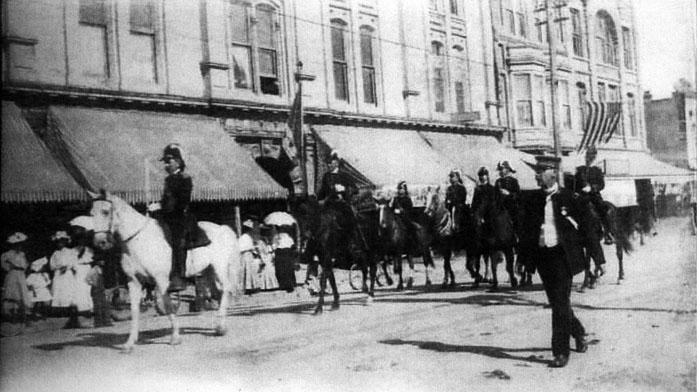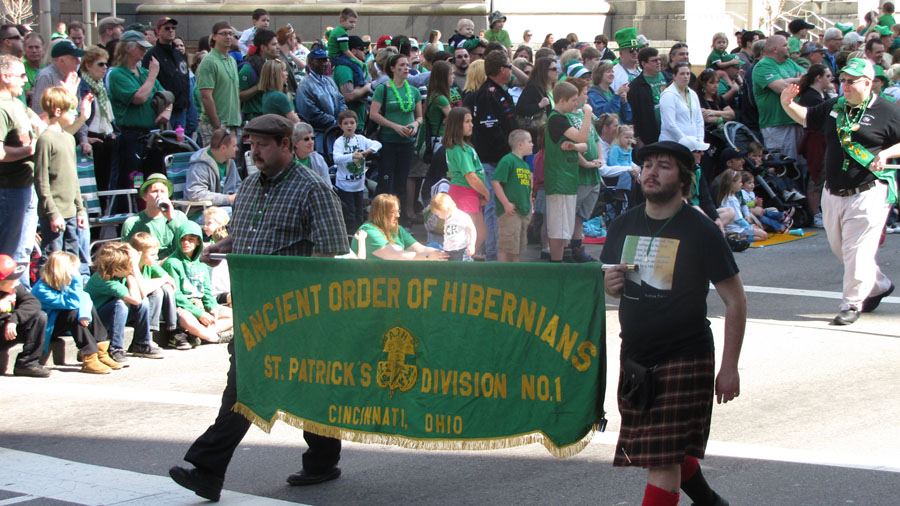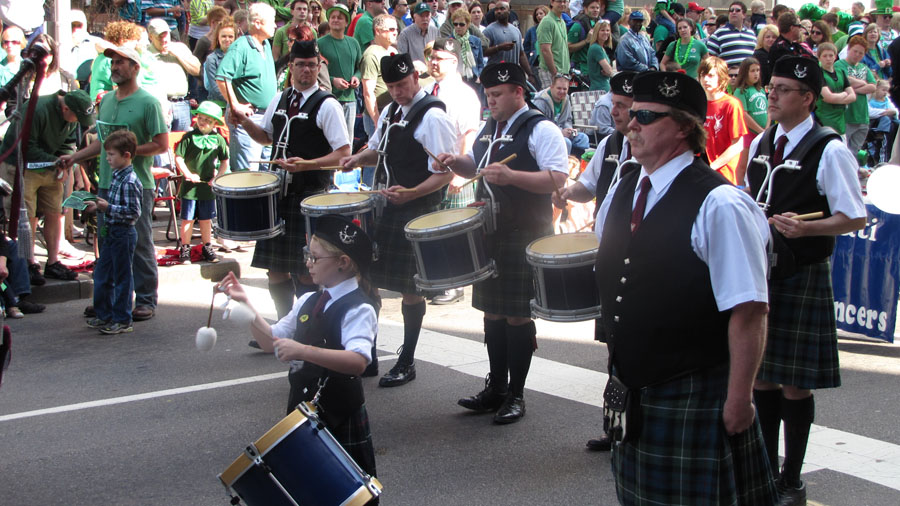By: Kevin Grace
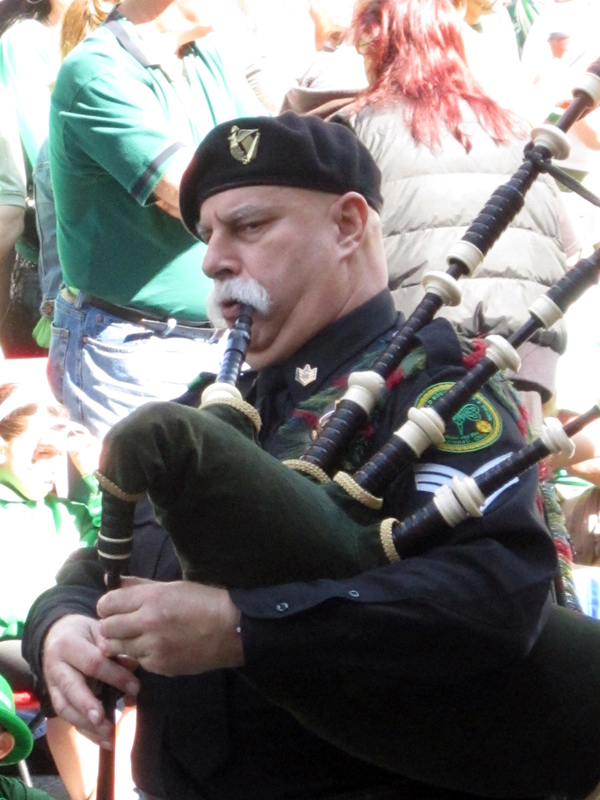 On Tuesday, March 17, the world will recognize St. Patrick’s Day for the Irish and Irish descendants with various celebrations and events, but this weekend will feature the many parades devoted to the day. Dublin, New York, Savannah, Chicago, Sydney, Butte, New Orleans, and, Cincinnati all have community parades, and studying how these parades are historically manifested reveals a great deal about urban culture – the elements of religion, ethnicity, enfranchisement, inclusion, social mores, and political influence. The day was first celebrated in America in Boston in 1737.
On Tuesday, March 17, the world will recognize St. Patrick’s Day for the Irish and Irish descendants with various celebrations and events, but this weekend will feature the many parades devoted to the day. Dublin, New York, Savannah, Chicago, Sydney, Butte, New Orleans, and, Cincinnati all have community parades, and studying how these parades are historically manifested reveals a great deal about urban culture – the elements of religion, ethnicity, enfranchisement, inclusion, social mores, and political influence. The day was first celebrated in America in Boston in 1737.
Here in Cincinnati, the initial St. Patrick’s Day parades were staged in the 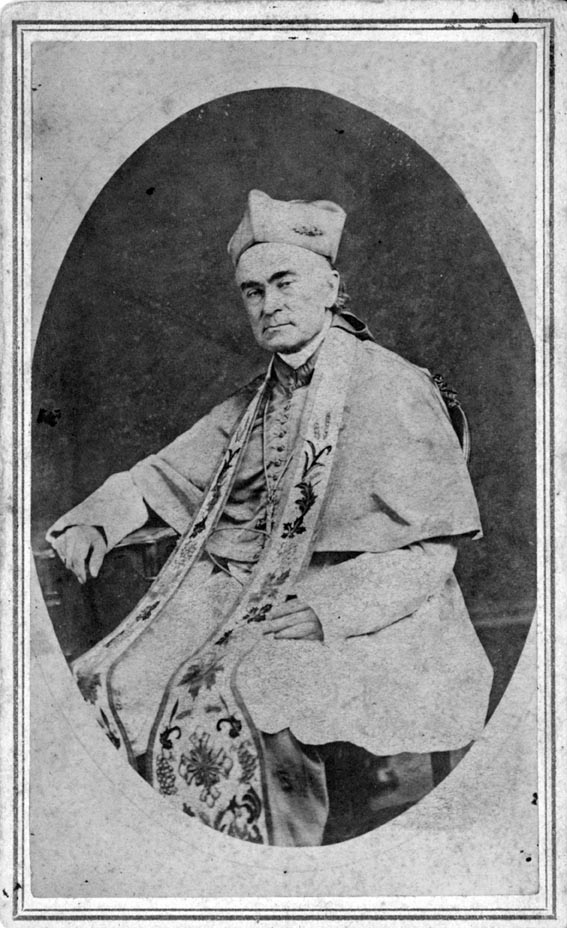 1840s and they were based upon the Irish and Irish American attempts to promote temperance. As the local Catholic diocesan newspaper, the Catholic Telegraph, effused in 1843, the parade identified the marchers as “defenders of the great cause…” Temperance parades, of course, were fairly common beyond the holiday of St. Patrick, prompting a remark from Charles Dickens when he visited Cincinnati as part of his 1842 lecture tour of America. Dickens witnessed one local parade that celebrated the Irish temperance priest, Theobald Mathew: “I was particularly pleased to see the Irishmen, who formed a distinct society among themselves, and mustered very strong with their green scarfs carrying their national harp and portrait of Father Mathew held high about the people’s heads.”
1840s and they were based upon the Irish and Irish American attempts to promote temperance. As the local Catholic diocesan newspaper, the Catholic Telegraph, effused in 1843, the parade identified the marchers as “defenders of the great cause…” Temperance parades, of course, were fairly common beyond the holiday of St. Patrick, prompting a remark from Charles Dickens when he visited Cincinnati as part of his 1842 lecture tour of America. Dickens witnessed one local parade that celebrated the Irish temperance priest, Theobald Mathew: “I was particularly pleased to see the Irishmen, who formed a distinct society among themselves, and mustered very strong with their green scarfs carrying their national harp and portrait of Father Mathew held high about the people’s heads.”
It was the local branches of the Ancient Order of Hibernians that later organized many of the early St. Patrick’s Day parades in Cincinnati, a tradition continued today along with the local chapter of the Friendly Sons of St. Patrick. The AOH American version was formed in 1836 as a Christian charity devoted to preserving Irish culture in the United States, and much of the effort was 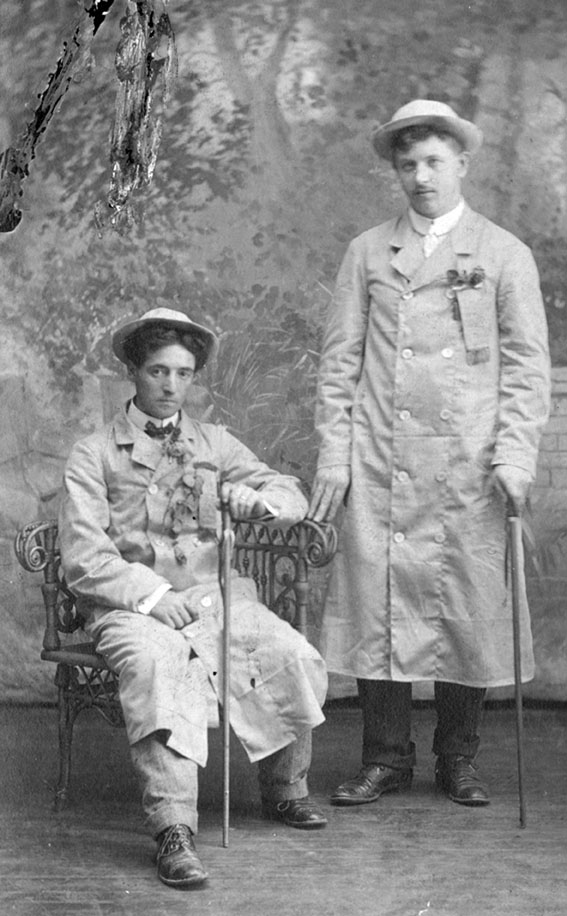 directed to maintaining an ethnic unity in the face of cultural assimilation. The Hibernians made their first official appearance in a Cincinnati St. Patrick’s Day parade in 1869 when Archbishop John Purcell blessed their marching banners.
directed to maintaining an ethnic unity in the face of cultural assimilation. The Hibernians made their first official appearance in a Cincinnati St. Patrick’s Day parade in 1869 when Archbishop John Purcell blessed their marching banners.
After this, the parade became more military-oriented than temperance based, in large part to honor the veterans of the Civil War. But there was another aspect to it as well. And, after the war, there was the growing Fenian movement. Many Irish fought in the Civil War, primarily on the Union side, but there were a fair number on the Confederate side as well. Thus, with military training and a continuing desire to overcome English rule in Ireland, many Irish veterans joined the American branch of the Fenians, a nationalist organization that sought to oust the British by force. In 1866 the American Fenians, with many leaders from Cincinnati, launched a raid near the Niagara River in Canada, believing if the English were forced to put down a revolt in Canada, a rebellion could easily be mounted in Ireland. The Canadian invasion was a complete failure as the Fenian forces were thwarted and 85 Cincinnati Irishmen were taken prisoner. A revolt in Ireland the next year failed as well.
However, the Fenians still put on a show during Cincinnati’s parades. An Irish immigrant, Civil War veteran, Fenian, and Irish Nationalist by the name of George Sweeny noted of one St. Patrick’s Day parade in the 1870s, “The Fenians 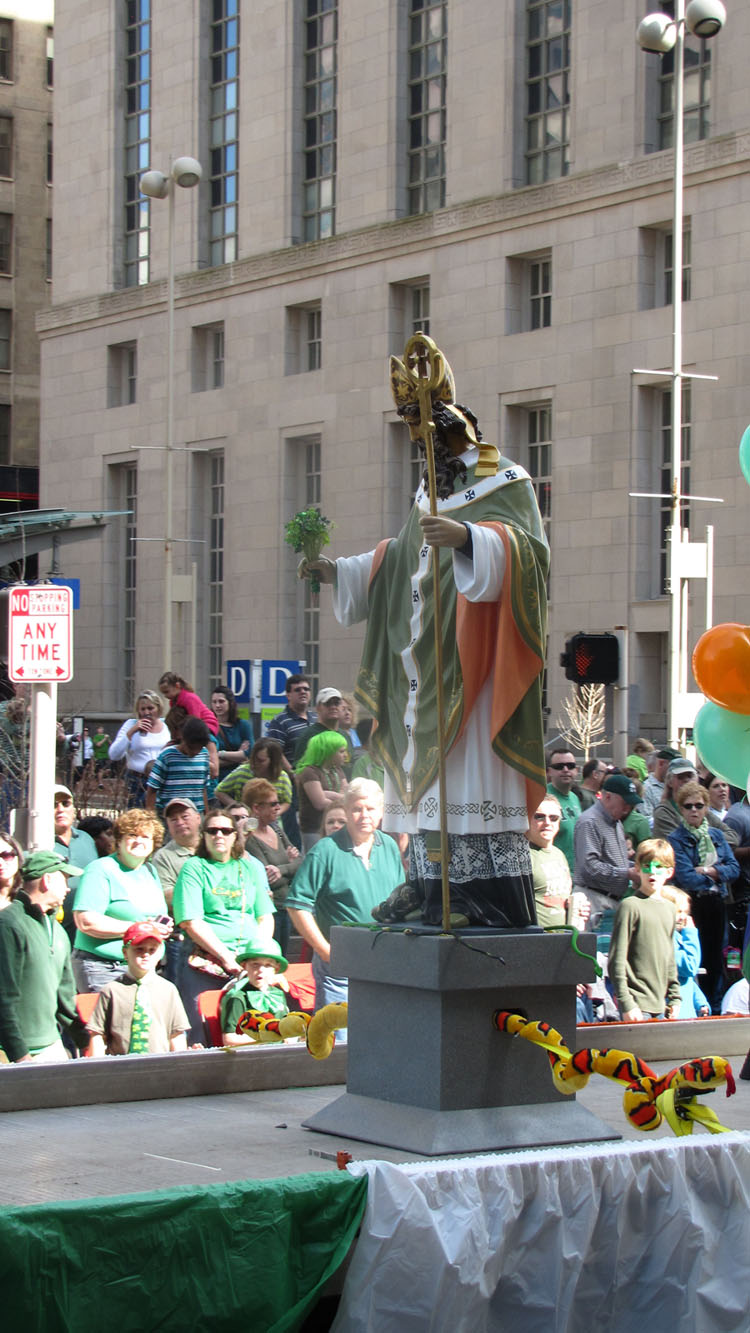 mustered at their armory in the early morning, attracting the attention of the public in their neat uniforms, which consisted of a blue zoave jacket and pants trimmed with green.” Along a very long parade route, military and civic groups marched past St. Peter in Chains Cathedral, Cincinnati City Hall, and the buildings of downtown Cincinnati before crossing the Ohio River to Covington and Newport before re-crossing the river to Cincinnati.
mustered at their armory in the early morning, attracting the attention of the public in their neat uniforms, which consisted of a blue zoave jacket and pants trimmed with green.” Along a very long parade route, military and civic groups marched past St. Peter in Chains Cathedral, Cincinnati City Hall, and the buildings of downtown Cincinnati before crossing the Ohio River to Covington and Newport before re-crossing the river to Cincinnati.
In the 20th century, the parade had good years and bad in terms of interest and attendance. As the decades passed, the notion of a St. Patrick’s Day parade in Cincinnati dissipated to nothing. But the Hibernians came through. The Saint Patrick Division No. 1 of Cincinnati’s AOH decided to revive the parade. Under the leadership of men like Tom O’Brien, R. Murray Fogarty, and big Jim Murphy, the parade was restarted in 1967. And with that rebirth came the beginnings of the traditions celebrated  today in the city. Beginning in 1970, it became the custom for the Hibernians to “steal” St. Patrick in the weeks leading up to the parade. In Mt. Adams, traditionally an Irish and German neighborhood, there were two separate Catholic churches, one for each ethnicity. By the mid-1960s both congregations were in decline as Cincinnati neighborhood demographics changed, and the Irish’s Holy Cross Church was administratively merged with the Germans’ Immaculata Church. In 1970, Holy Cross was closed completely. Jim Crowley of Crowley’s Tavern in Mt. Adams asked Father Wilfrid Flanery to place the Irish church’s St. Patrick statue in the German church so the Irish parishioners would feel they were welcome. For whatever reason, the move could not be made official so the doors to the church were conveniently left unlocked one night. On March 15, a group of Irish congregants seized the statue and crept into the church to “hide” it there.
today in the city. Beginning in 1970, it became the custom for the Hibernians to “steal” St. Patrick in the weeks leading up to the parade. In Mt. Adams, traditionally an Irish and German neighborhood, there were two separate Catholic churches, one for each ethnicity. By the mid-1960s both congregations were in decline as Cincinnati neighborhood demographics changed, and the Irish’s Holy Cross Church was administratively merged with the Germans’ Immaculata Church. In 1970, Holy Cross was closed completely. Jim Crowley of Crowley’s Tavern in Mt. Adams asked Father Wilfrid Flanery to place the Irish church’s St. Patrick statue in the German church so the Irish parishioners would feel they were welcome. For whatever reason, the move could not be made official so the doors to the church were conveniently left unlocked one night. On March 15, a group of Irish congregants seized the statue and crept into the church to “hide” it there.
This tradition itself is now marked with pomp and ceremony every year on the  third Sunday in February. At the two o’clock Mass, the statue is in front of the pews. The Ancient Order of Hibernians is there, clad with green sashes, and the Emerald Society, the pipe and drum corps, attends as well. The pipes and drums lead a procession out to the streets of Mt. Adams, followed by the Hibernians hoisting the statue in a pickup truck and surrounding it in victory for another successful mission. Then everyone adjourns to Crowley’s Pub. But there is another twist to the event. The statue that is taken from the church every year is an old one, donated by a James Healy in the 1920s. That particular one is carefully stored somewhere and the statue that miraculously appears with the Hibernians in the parade is one that was originally in Cincinnati’s St. Patrick’s Church.
third Sunday in February. At the two o’clock Mass, the statue is in front of the pews. The Ancient Order of Hibernians is there, clad with green sashes, and the Emerald Society, the pipe and drum corps, attends as well. The pipes and drums lead a procession out to the streets of Mt. Adams, followed by the Hibernians hoisting the statue in a pickup truck and surrounding it in victory for another successful mission. Then everyone adjourns to Crowley’s Pub. But there is another twist to the event. The statue that is taken from the church every year is an old one, donated by a James Healy in the 1920s. That particular one is carefully stored somewhere and the statue that miraculously appears with the Hibernians in the parade is one that was originally in Cincinnati’s St. Patrick’s Church.
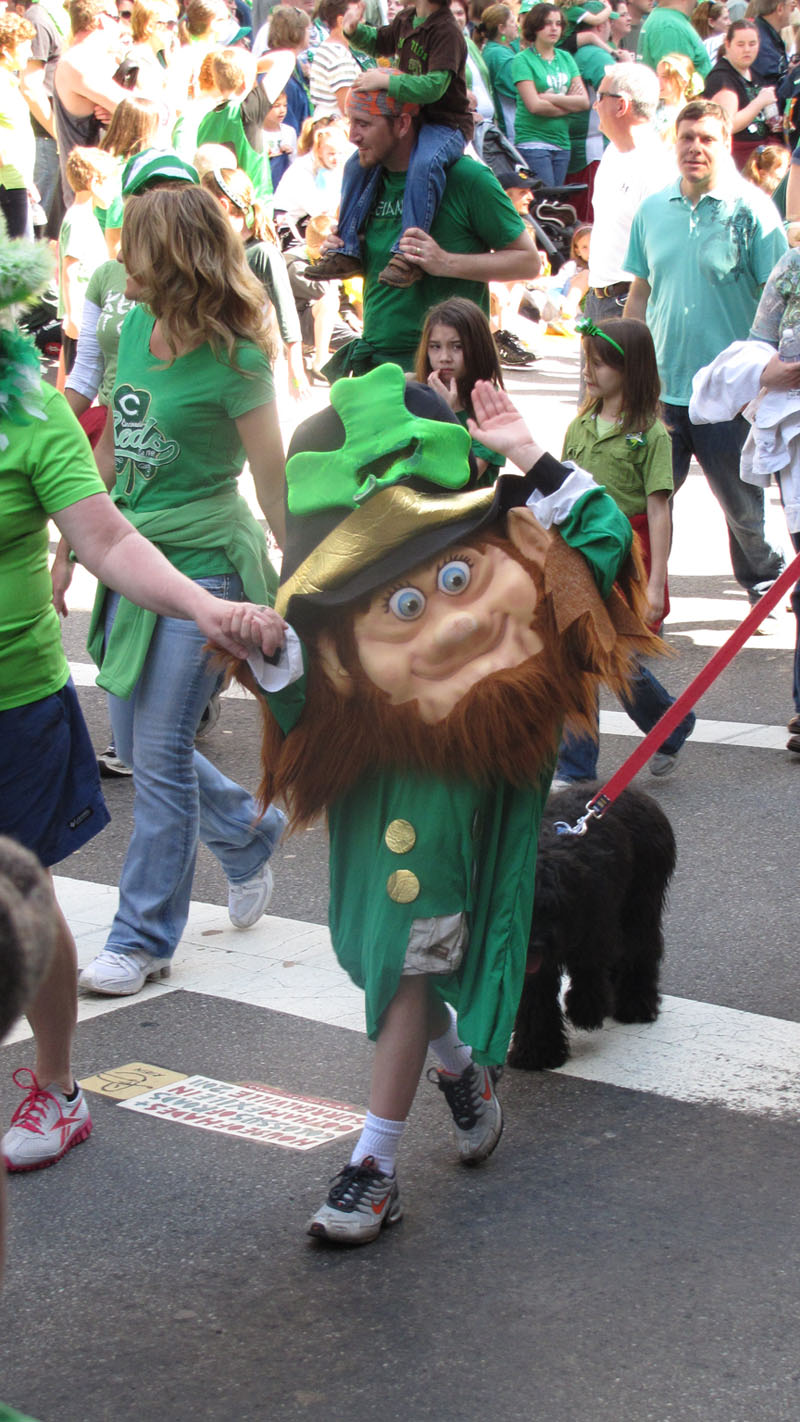 And even today, there are civic issues that surround a parade that marks both ethnic and community pride: what the parade route will be, will it go past Fountain Square, what organization funds the parade, how will beer sales and souvenirs be regulated, which particular groups are permitted to march, and which ones might be denied. St. Patrick’s Day is also big business in America and huge for tourism. In 2012, for instance, Americans spent $4.5 billion on St. Patrick’s Day, with the brewing industry earning $245 million of that figure, accounting for 1% of their annual sales. Worldwide, 13 million pints of Guinness Ale are consumed, with over 3 million of those in the United States.
And even today, there are civic issues that surround a parade that marks both ethnic and community pride: what the parade route will be, will it go past Fountain Square, what organization funds the parade, how will beer sales and souvenirs be regulated, which particular groups are permitted to march, and which ones might be denied. St. Patrick’s Day is also big business in America and huge for tourism. In 2012, for instance, Americans spent $4.5 billion on St. Patrick’s Day, with the brewing industry earning $245 million of that figure, accounting for 1% of their annual sales. Worldwide, 13 million pints of Guinness Ale are consumed, with over 3 million of those in the United States.
Perhaps the only aspect that cannot be discussed and controlled is the weather. For some years, Cincinnati’s St. Patrick’s Day parade has been marked by warm, sunny weather and other times it has fallen victim to sleet, snow, and rain. But without fail, St. Patrick always rides on his float.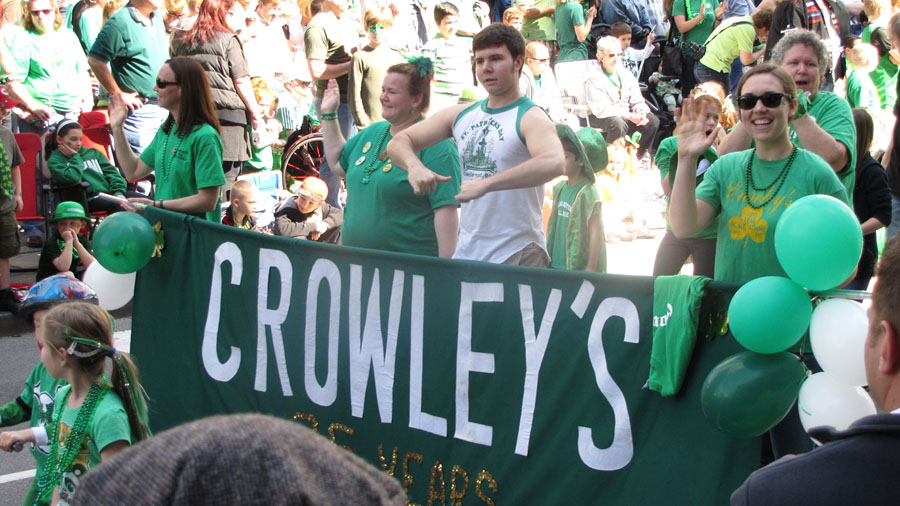
To learn more about the Urban Studies Collection in the Archives & Rare Books Library, please contact us at archives@ucmail.uc.edu, call us at 513.556.1959, go to our website at: http://www.libraries.uc.edu/arb.htmlease, or find us on Facebook at https://www.facebook.com/ArchivesRareBooksLibraryUniversityOfCincinnati.

